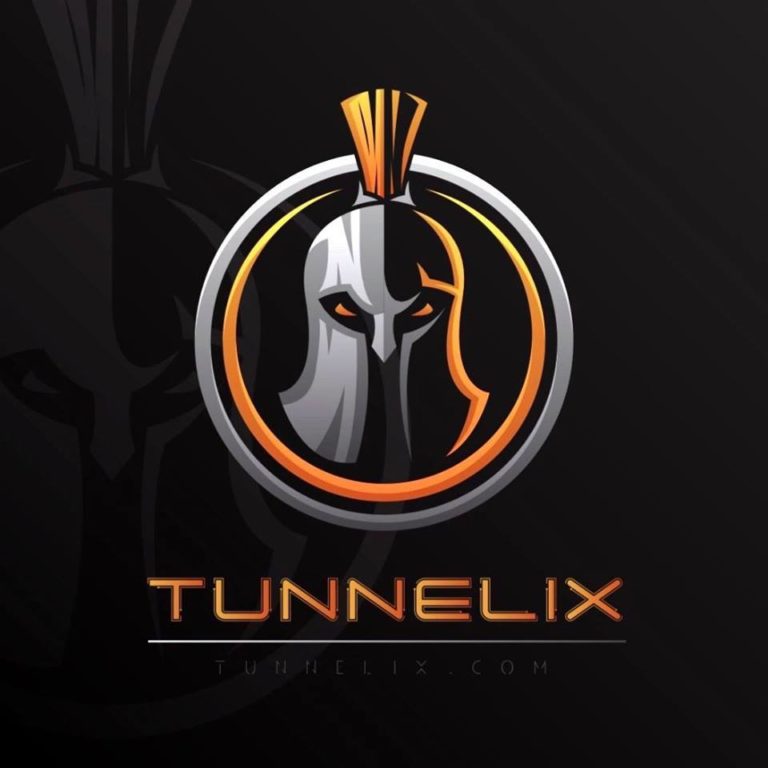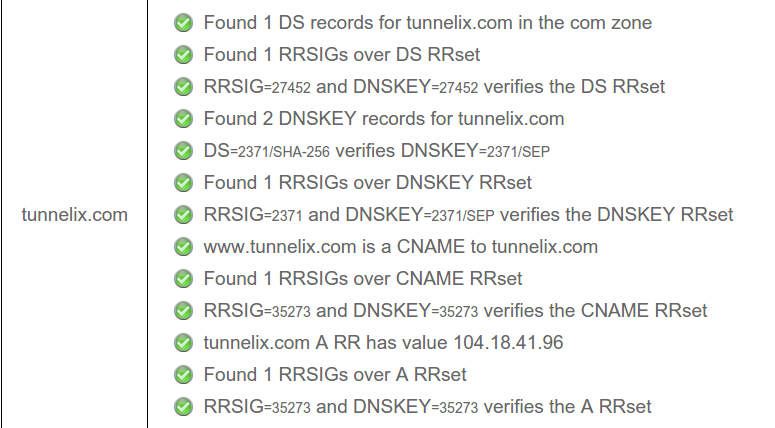To reach another person on the Internet you have to type an address into your computer - a name or a number. That address has to be unique so computers know where to find each other. ICANN coordinates these unique identifiers across the world. Without that coordination we wouldn't have one global Internet. When typing a name, that name must be first translated into a number by a system before the connection can be established. That system is called the Domain Name System (DNS) and it translates names like www.icann.org into the numbers – called Internet Protocol (IP) addresses. ICANN coordinates the addressing system to ensure all the addresses are unique. - ICANN
Finally, i decided to enable DNSSEC on Tunnelix.com. It can be tested on the http://dnssec-debugger.verisignlabs.com link and its really cool. This is just another security addons to kept away from being attacked. For example, an attacker can take control of the session with the aim to make the user believe that the hijacker deceptive website is the right one. We also need to understand the basics of how DNS traffic work. We are normally like three players in the normal DNS world that is your computer, the ISP's recursive DNS servers, and the website's authoritative DNS servers. Of course there are cached DNS servers that facilitate the DNS query. So to get into more detail how the attack goes on is where the attacker try to trick the resolver making it to believe that, lets say, tunnelix.com lives at the IP xx.xx.xx.xx and even to remember it for lets say 7 days. Its important to understand that since most of the traffic pass on UDP, it is kind difficult to prevent attackers from sending a flood of responses to the resolver.
DNSSEC is a technology which acts as a security layer on top of the DNS traffic by means of cryptographic tools to re-assure you that the website you are visiting is the real one. In 2008, Dan Kaminsky revealed a flaw that could allow attackers to easily perform cache poisoning attacks on most nameservers. Here is a link from the ISC (Internet System Consortium) which shed lots of interesting material about the DNSSEC technology. For bloggers behing Cloudfare, you can easily activate DNSSEC on for your domain, of course, if the root domain name is supporting DNSSEC, otherwise its impossible to achieve it. For example .mu domain does not support DNSSEC. On cloudflare, the steps are easy. You just need to activate the DNSSEC with a simple click and save all those informations like DS records, Digest, Digest type, Algorithm uses, Public key etc.. and feed it to the domain name registrar. The information will be verified by Cloudflare after which you are happily DNSSEC enabled domain owner.
To test out on your linux terminal if a domain is signed use the following command:
root@server:~# dig tunnelix.com +dnssec ; <<>> DiG 9.10.3-P4-Ubuntu <<>> tunnelix.com +dnssec ;; global options: +cmd ;; Got answer: ;; ->>HEADER<<- opcode: QUERY, status: NOERROR, id: 36645 ;; flags: qr rd ra ad; QUERY: 1, ANSWER: 3, AUTHORITY: 0, ADDITIONAL: 1 ;; OPT PSEUDOSECTION: ; EDNS: version: 0, flags: do; udp: 512 ;; QUESTION SECTION: ;tunnelix.com. IN A ;; ANSWER SECTION: tunnelix.com. 177 IN A 104.18.41.96 tunnelix.com. 177 IN A 104.18.40.96 tunnelix.com. 177 IN RRSIG A 13 2 300 20160724190355 20160722170355 35273 tunnelix.com. L5t/xVbsuB99HntpdpHkYu4ig52YL9QA+Vvi509KFgdgKrtY3pvZfKfD LGjtT0Ev0UFEn73TObofJyOmzIEmUg== ;; Query time: 46 msec ;; SERVER: 127.0.1.1#53(127.0.1.1) ;; WHEN: Sat Jul 23 22:05:57 MUT 2016 ;; MSG SIZE rcvd: 181
"To fix this, all major DNS servers implemented Source Port Randomization, as both djbdns and PowerDNS had before. This fix is widely seen as a stopgap measure, as it only makes the attack up to 65,536 times harder. An attacker willing to send billions of packets can still corrupt names. DNSSEC has been proposed as the way to bring cryptographic assurance to results provided by DNS, and Kaminsky has spoken in favor of it." - blackhat.com
Domain owners might consider enabling DNSSEC on their domains to increase the security of letsencrypt in their infrastructure for ACME, as there is a return on investment in terms of security. - Loganaden of cyberstorm.mu
Other article i wrote on BIND: Anatomy of a simple dig result


